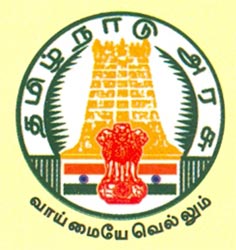Now enter banking & financial funds: Investment Ideas Note - May 2025 by Wallet Wealth..!
Market
Outlook
When you received the April month’s investment ideas
note, the nation's citizens would have witnessed a historic moment of India’s
fight against terrorism and safeguarding the nation’s integrity.
As responsible citizens of the nation, we all must stand
united with India in its combat against our national harmony being destroyed by
unforeseen acts of brutality.
Our hearts go out to the families of victims who might
have lost a husband, a father, a brother, or a son. India stands by you!
We will also oversee how a disruption in national
security, also affects the economic stability, causing a loss of investors'
confidence and increased volatility in the financial markets.
The stock exchanges were already under the impact of new
reciprocal tariffs announced by the Trump government. High tariffs were imposed
on China, 34%, Japan, 24%, and 20% % for the European Union.
India, which charges 52% for imports from the U.S had to
face a 26% tariff on exports to the United States.
Let
us see how the stock market reacted in April
|
Index
Performance April 2025 |
|
|
|||
|
Date
|
April 2025
|
1,
|
April 2025
|
30,
|
Gain/Loss |
|
BSE Sensex |
76,024 |
|
80,242 |
|
5.5% |
|
BSE Midcap
|
41,099 |
|
42,883 |
|
4.3% |
|
BSE
Small Cap |
46,671
|
|
47,400
|
|
1.6%
|
Though the financial market response to the tariff
announcement was a cascading effect, the auto sector was unaffected by the new
tariff policy, as it excludes finished vehicles, auto components, steel, and
aluminium articles.
The
trump effect also eroded all the US dollar gains post-election. While the US
dollar surged following Trump’s election, fuelled by expectations of tax
reforms, it did not maintain the surge, but the dollar value fell to its
pre-election levels.
During the first week of April, India’s volatility gauge
rose to 59%, which is the highest single-day spike in recent years. The SENSEX
dived deep into 3,900 points and Nifty sank below 22,000 as sell-off panic
gripped the investors.
The fresh tariffs also affected the international mutual
funds, as many of the mutual funds invest in global equities or track major
international indices.
Amid these uncertainties, the Indian stock market reacted
positively to key domestic and global developments in mid-April.
This optimism was attributed to Trump’s decision to delay
the imposition of reciprocal tariffs for 90 days, RBI’s policy decisions,
strong Q4 earnings, and the global shift in investment sentiment.
|
NIFTY 50 |
5.02% |
|
Nifty midcap 150 |
7.32% |
|
Nifty Bank |
8.4% |
Mutual
Funds and FII Activity – April 2025
|
MF/FII
activity |
FII
|
MF
|
|
Equity |
6,363.48 |
19.099.92 |
|
Debt |
- 13,974.72 |
- 13,857.42 |
|
Total |
-7,611.24 |
5,242.50 |
The net purchase of equity in April 2025 by the FIIs was
Rs. 6363.8 crore, as compared to Rs. 8053.44 crores in March. Similarly, the
FIIs sold debt worth Rs. 13,974.72 in April. During March, the FIIs bought debt
worth Rs. 9109.97.
While in mutual funds bought equity worth Rs. 19,099.92
crores, as compared to the purchase of Rs. 5925.67 crores worth of equity in
March 2025.
The mutual funds also sold debt worth Rs. 13,857.42 in
April as compared to sales of Rs. 75,504.15 worth of debt by mutual funds in
March 2025.
OPERATION
SINDOOR – Market and Economic Perspective
India
conducted Operation Sindoor,
targeting 9 terrorist camps in Pakistan and POK, in response to the Pahalgam
attack. Historically, similar military actions like the Uri (2016) and Balakot
(2019) strikes caused limited and short-lived market volatility.
Key
Insights:
• Market Resilience in Past Conflicts:
o Kargil
War (1999): Initial drop of -8.3% followed by a strong rebound of 36.6% in a
year.
o Uri
& Balakot strikes: Minor short-term fluctuations with positive 1-year
returns.
• Economic Indicators:
o Past
wars saw short-term increases in
inflation and fiscal deficits, but limited
impact on long-term GDP growth.
o Macro
data from conflicts in 1962, 1965, 1971, and 1999 shows temporary economic
stress followed by recovery.
• Conclusion:
o While
geopolitical events cause temporary market disruptions, India’s long-term growth trajectory remains intact.
o Staying
invested and focusing on long-term fundamentals is advisable.
What’s in
store for us next?
In April 2025, foreign portfolio investors (FPIs)
substantially ramped up their investments in Indian financial stocks, recording
the third-largest monthly inflow into the sector. Data from the National
Securities Depository shows that FPIs injected ₹184.09 billion ($2.18 billion),
driving a 4.1% gain in the Nifty Financial Services index. This wave of foreign
investment also propelled the benchmark Nifty 50 index up by 3.5%.
GDP and
EPS
India’s GDP is forecast to grow by 6.3% in 2025, driven
by better lending conditions and continued financial reforms. Corporate
earnings are also set to pick up, with Nifty 50 earnings-per-share (EPS)
expected to rise by 14.7% in the financial year ending March 2026.
The Indian
Currency
The Indian rupee has seen fluctuations recently, with its
latest appreciation attributed to foreign capital inflows into equities.
However, analysts expect this trend to reverse by the end of July 2025,
projecting a weakening of the rupee amid signs of an economic slowdown and a
shift in the Reserve Bank of India’s (RBI) intervention strategy. In response
to global uncertainties, the RBI has undertaken measures such as bond purchases
and is considering interest rate cuts to bolster the economy.
Overall
economic outlook
Global
brokerage firms remain optimistic about India's stock market rebound in 2025,
anticipating it will recover ground lost to global counterparts. They point to
robust earnings growth, prudent fiscal management, and a supportive policy
backdrop as primary growth drivers. Investors are encouraged to maintain a
cautious and diversified approach, closely monitoring both domestic dynamics
and global economic trends to navigate the market’s complexities effectively.
Equity
The
market cap over GDP ratio is currently at 121. This shows that the market is
moderately overvalued. The zone indicates a good entry point and little
cautious while investing for a short term.
The
investor should focus on their financial goals and realign the portfolio at
this juncture.
The
investors can focus investing on large cap & hybrid funds and investors who
would like to take a little risk can enter banking & financial funds at
this juncture.
It
is advisable not to invest lumpsum and invest into equity mutual funds over a
20–24-week period. As the valuations of small cap is on the higher side and
hence one can wait and watch before investing in small cap. We are of the opine
that the large & mid cap funds would outperform the small cap this year.
Debt
The
10-year G-Sec is trading at 6.43% and the 5 Year G-Sec is trading at 6.13%. One
can start looking at high quality corporate bonds and banking & PSU bond
with the maturity of 3 years could possibly generate a decent double-digit
return. The best time to enter duration management funds would be faring better
during this point in time. If one would like to look at parking money for a
period of less than 1 year can look at investing in ultrashort/money market
funds.
We
strongly recommend the investors to avoid credit risk funds now.
If
you need any advice on investments, do call us at 99401 16967.
S.Sridharan, Founder, https://www.walletwealth.co.in/
Team Wallet Wealth,
AMFI Registered Mutual Fund Distributor
2nd Floor, No.8A, 2nd Main Road,
Nanganallur,
Chennai – 600 061
Ph: 044-48612114
Disclaimer: The
above information and views are personal and confidential. The information
herein is based on information obtained from sources believed to be reliable,
but the Company does not make any representation or warranty, express or
implied, as to its accuracy, completeness, timeliness, or correctness for any
particular purpose. Opinions expressed are of our personal and subject to
change without notice.




























